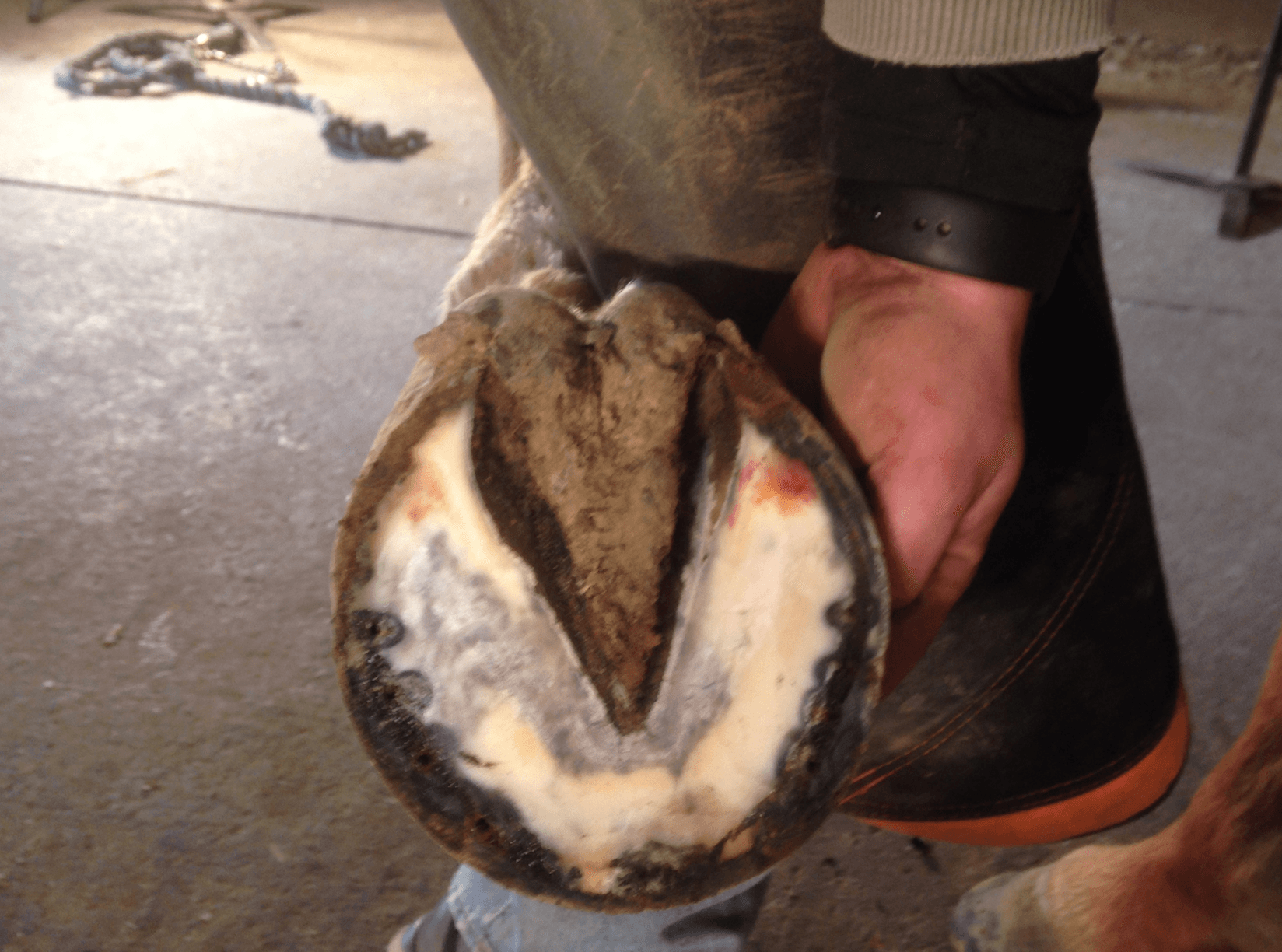Identifying and Treating Corns in Horse Hooves

Proper hoof care is essential to a horse’s well-being. Without regular hoof maintenance, horses can develop conditions in their feet that cause discomfort and can require costly treatment. One condition that is occurring more frequently in horses is corns – severe, visible bruising in a horse’s feet that is problematic if untreated. It’s important for horse owners to provide the proper support and protection to treat corns and get hooves healthy again.
Causes & Symptoms
There are two potential causes of corns. For shod horses, the condition occurs when the foot grows over the shoe where the sole, white line and heel come together in the hoof. Corns can also develop in the feet of horses when the coffin bone pushes down on the sole. In both cases, corns cause intense pressure in one area of the hoof and becomes uncomfortable. In order to avoid injuries, it is important for hoof care professionals to tend to the condition as quickly as possible.
The most common symptoms of corns include:
- Dark Bruising: Corns cause severe bruising on the foot in the seat of the corn. If this happens, it is likely that the hooves need extra support in order for the horse to become comfortable again and heal.
- Discomfort: If a horse with corns is left untreated, the horse may stand or walk unevenly as a result of the irritation. It is vital for horse owners to provide the proper hoof care to horses suffering from corns in order to avoid injury or lameness.
Unfortunately, there is no specific cause linked to corns. However, regular maintenance and trimming can help avoid the condition and help with early detection.
Managing Corns
Depending on whether a horse is shod or barefoot, there are different ways to treat corns. For shod horses, horse owners may need to either begin shorter shoeing cycles or make sure their horses are equipped with a fuller fitting shoe, or both, in order to help provide more support. This allows extra room for a horse’s feet to grow and relieves the pressure on the soles.

If a barefoot horse develops corns, horse owners can use pour-in pad materials to help with the healing process and allow bruised feet to heal. Some fast-setting, soft pad materials bond directly to the sole and frog, and improve the depth of the sole. These soft packing materials soften the concussion between the coffin bone and the ground, so the horse has a soft layer of protection to help the hoof heal comfortably. They act as a cushion for the tender feet against abrasive ground surfaces. Depending on the type, some soft pour-in pad materials should be applied under a plastic or leather pad.
Because corns can develop at any time, it’s vital for horse owners to get their horses’ hooves examined thoroughly and trimmed on a regular basis, about every six weeks. A consistent hoof care regimen helps avoid conditions like corns, discomfort and costly treatment.
Talk with your farrier or veterinarian about how pour-in pad materials can help manage corns, and make sure your horse is on an adequate maintenance schedule.
About Tab Pigg
Tab Pigg is the Central Regional Sales Manager for Vettec, and oversees states ranging from Canada to Mexico, between the Rockies and the Mississippi River. He travels frequently educating dealers and farriers at hands-on workshops and represents Vettec at tradeshow events. Tab assisted Vettec for three years leading clinics and helping with regional work before joining the company full-time in 2003.
Tab was raised around horses and became genuinely interested in the equine industry in 1982. With the skills he learned through hands-on experience and multiple apprenticeships, Tab started a shoeing practice of his own in 1984. In 1992, Tab successfully took the Certified Journeyman Farrier exam and has been practicing as a farrier ever since. Tab has presented at the International Hoof Care Summit several times, and served as the Marketing Chairman on the Farrier Industry Association (FIA) board of directors for two years. Tab is a spokesperson for Vettec and is published in many equine industry publications.
Outside of work, Tab enjoys fishing and golfing, although the rain and heat in Texas keep him busy mowing his lawn. Tab also enjoys visiting his father nearby to help on their family farm.














